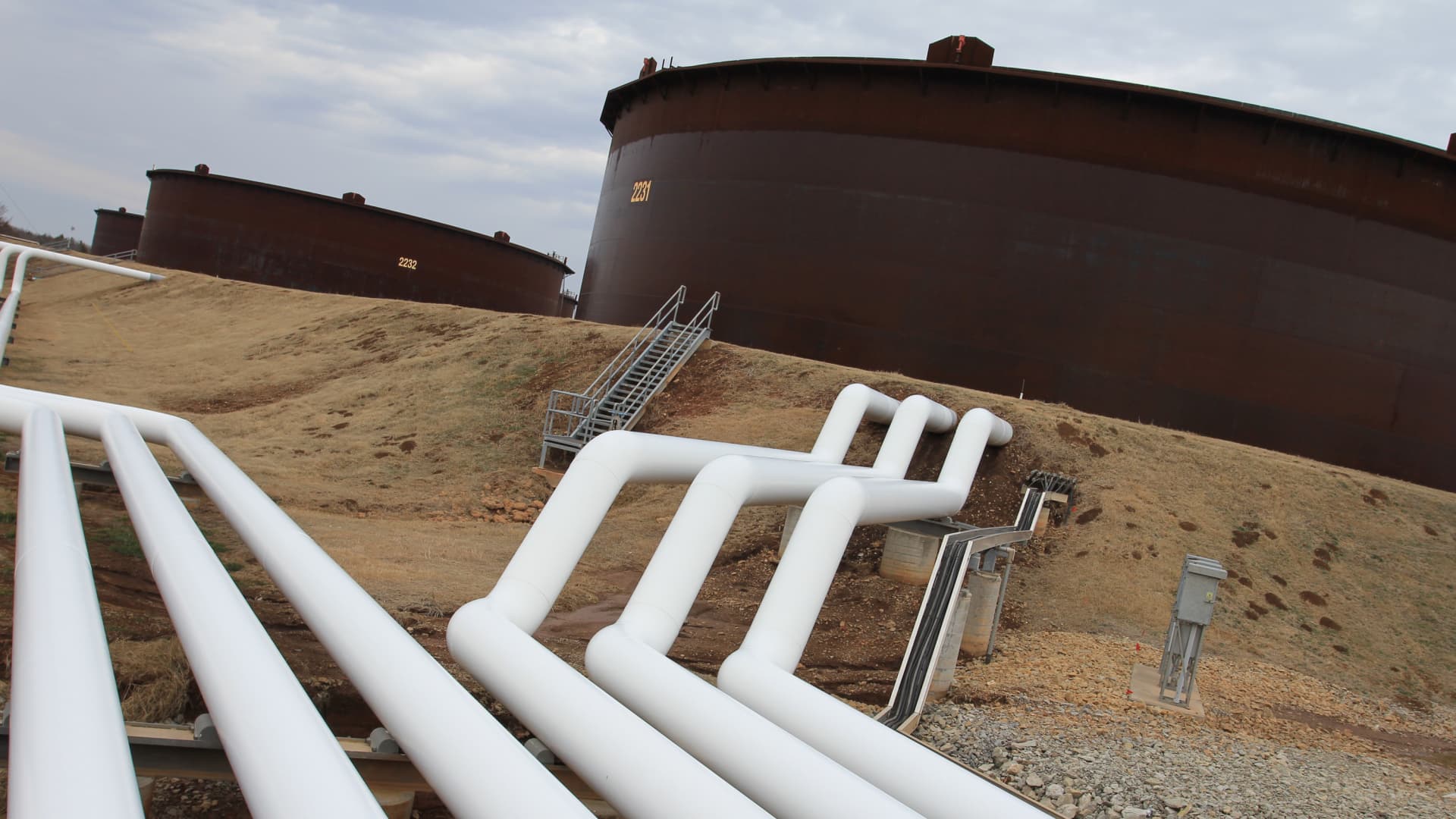Pipeline and crude storage tanks in Cushing Oklahoma.
Justin Solomon | CNBC
Crude oil futures rose for a third day as U.S. production this year is expected to grow less than expected, easing worries that the market is oversupplied.
The West Texas Intermediate contract for March added 59 cents, or 0.80%, to $73.90 a barrel, while the Brent contract for April gained 58 cents, or 0.75%, to $79.18 a barrel.
The U.S. pumped a record 13.3 million barrels per day of crude oil in December, but output is not expected to surpass this level until early 2025, according to estimates from the Energy Information Agency.
On balance, domestic oil output is expected to grow by 170,000 barrels per day this year, down significantly from the EIA’s previous forecast of 290,000 bpd. Crude production fell in January due to weather and is forecast to rebound in February before easing slightly through the middle of the year, the EIA said.
U.S. oil output has raised worries among traders that the market is oversupplied as China’s economy and crude demand softens. But the world will face a crude oil supply deficit of 120,000 barrels per day this year, according to EIA estimates.
Occidental Petroleum CEO Vicki Hollub told CNBC this week that although the market is currently oversupplied, the world will face a major shortage by the end of 2025 because crude reserves aren’t being replaced fast enough.
“We’re going to be in a situation now where in a couple of years’ time we’re going to be very short supply,” Hollub told CNBC.
Oil traders are also monitoring developments in the Middle East this week as U.S. Secretary of State Antony Blinken consults with U.S. allies in the region in an effort to secure a truce in the Israel-Hamas war.
The market is also watching for further U.S. strikes against Iranian forces and its militia allies in retaliation for the death of three American troops in Jordan in late January.







